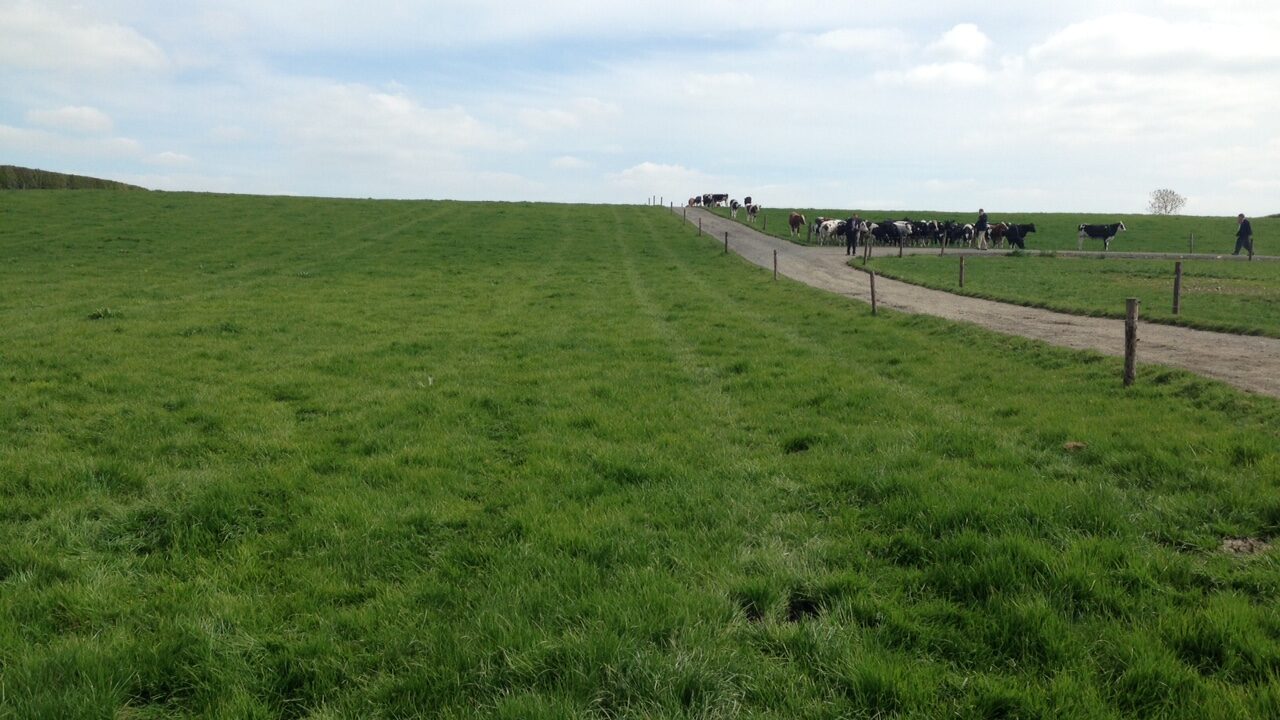It has been extremely difficult to maintain grass quality in June, but staying on an 18-19-day rotation definitely helped us to stay on top of things.
The cows did have to work a bit harder than I would have liked but, when grass growth is barely meeting demand, there is no option of making surpluses into bales and cleaning off stemmy base, the cows have to work hard.
The farm was walked six times in June to stay on top of available feed and targeting stemmy paddocks early etc.
We will take advantage of this week’s high growth rate and have ear marked three paddocks to be cut along with the second cut today (Wednesday).
I could have added another three paddocks to that list but we can’t clean up the whole platform in one go.
Recovery of mowed paddocks is very slow (25+ days), so we must be mindful of the higher demand for the next few weeks. Currently at 75kg, this is manageable.
Grass measuring gives us a great picture of what we are growing and what we need to improve in terms of managing grass quality – there are so many areas that effect grass quality mid season; Nitrogen application and timeliness, soil potassium levels (as low K can lead to increased plant stem content), soil ph and soil aeration, as well as management.
Why Measures Grass?
By not measuring grass, farmers are not availing of a huge database resource which could be used to determine future stocking rates, grass tonnage grown and utilised, suitable start of calving dates etc, based on the grass growth curve.
Maximising grass energy levels is key to profitable dairying and unless we focus on feed quality and closely monitoring growth rates, it will be very difficult to get high levels of milk solids production from pasture.
Continue walking the farm weekly to identify any improvement in growth rates and be prepared to take out feed quickly.
We must conserve enough winter feed for the herd so do your sums now; how many animals will you need to feed this autumn, winter and early next spring? Measure the tonnage in the first cut clamp/count bales and estimate dry matter.
It is only then that we can work out the second cut requirement, or how much feed has to be purchased. It is important to work this out before any ground is sprayed off for reseeding also, as this may affect the second cut acreage.
This year there will not be a mass dry off in early autumn owing to quota availability, however do not be complacent, cows can only be milked profitably in late autumn/early winter if grass silage quality is excellent.
Otherwise, milking late lactation animals on low energy silage will have a disastrous effect on body condition score and subsequently, fertility performance next year.
Conception rates to AI on many farms doesn’t seem to have been as good as last year with many farmers recording more repeats than they would like. We did 6.5 weeks of AI and a Hereford bull was then put with the herd.
He will stay in until the end of week 10 and we are hoping to use short gestation Angus for the last two weeks to pull back next years late calvers by a few days.
Hopefully we will be motivated enough to carry out this plan when the time comes!
Some may ask why we don’t just sell these late calvers but we are currently expanding the herd and so need the extra stock.
Cathal McAleer is a grassland consultant working with individual farmers and facilitating discussion groups throughout Ireland.
You can contact Cathal on 087 160 2491 / 0044 7749 531679 or by email: [email protected]

